 |
 |
 |
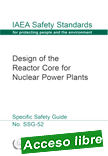 |
Design of the Reactor Core for Nuclear Power Plants. Specific Safety Guide
IAEA SAFETY STANDARDS SERIES No. SSG-52 | STI/PUB/1859 | Date published:2019
The reactor core is the central part of a nuclear reactor where nuclear fission occurs. It consists of four basic systems and components: the fuel (including fuel rods and the fuel assembly structure), the coolant, the moderator and the control rods, as well as additional structures such as reactor pressure vessel internals, core support plates, and the lower and upper internal structure in light water reactors.
|
This Safety Guide provides recommendations on meeting the safety requirements established in SSR-2/1 (Rev. 1) applied to the design of the reactor core for nuclear power plants. The publication addresses the safety aspects of the core design and includes neutronic, thermohydraulic, thermomechanical, and structural mechanical aspects. Other aspects considered are those relating to reactor core control, shutdown and monitoring, and core management.
|
 |
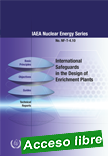 |
International Safeguards in the Design of Enrichment Plants
IAEA Nuclear Energy Series NF-T-4.10 ¦ STI/PUB/1865 ¦ 44 pages ¦¦ Date published: 2019
This publication is part of a series that aims to inform nuclear facility designers, vendors, operators and State governments, about IAEA safeguards and how associated requirements can be considered early in the design phase of a new nuclear facility. This particular publication is applicable to the design and construction of commercial uranium enrichment plants.
|
Safeguards by design dialogue undertaken early in the design and construction of enrichments plants facilitates the implementation of safeguards throughout all the lifecycle stages of the facility. The potential to reduce costs, avoid retrofits and achieve efficiencies both for the operator and for IAEA Member States, are important drivers for the early consideration of safeguards in a nuclear facility design project.
|
 |
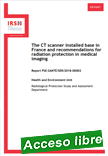 |
CT scanner installed base in France and recommendations for radiation protection in medical imaging
Report PSE-SANTÉ/SER/2018-00002. IRSN, Nov 2019. 30 p.
In answer to a joint request from the Directorate General for Health (DGS, Ministry of Health) and the Directorate for Social Security (DSS) regarding the French computed tomography (CT) scanner installed base and recommendations on good practices taking into account the needs of radiation protection in medical imaging, IRSN used two databases for which it is responsible by regulations: SIGIS, the information and radioactive sources management system (irsn.fr/sources), and the application for the diagnostic reference levels management.
|
IRSN also held hearings with associations of professionals on topics in connection with the request. This study highlights the need for change by focusing on IRSN’s field of competence: radiation protection.
|
 |
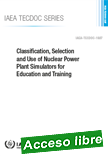 |
Classification, Selection and Use of Nuclear Power Plant Simulators for Education and Training
IAEA-TECDOC-1887 | 44 pages | Date published: 2019
As nuclear power is one of the options that can be used to meet the growing energy demands of countries around the world, educating and enriching people with adequate knowledge on nuclear energy, nuclear reactor technologies, nuclear systems, reactor components and the embedded nuclear safety features are of paramount importance.
|
Experience shows that education and training NPP simulators are effective tools that allow for a broad range of target groups to meet education and training objectives. It is the purpose of this publication to provide guidance based on the lessons learned from IAEA training courses on reactor technologies with the use of various NPP simulators. The main topics are classification of various types of NPP simulators for education and training, suitable selection of simulators according to assessment of education and training needs, and integration of simulators in to educational and training programmes to enhance knowledge based skills.
|
 |
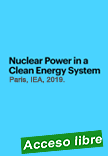 |
Nuclear Power in a Clean Energy System
Paris, IEA, 2019.
As the leading energy organisation covering all fuels and all technologies, the International Energy Agency (IEA) cannot ignore the role of nuclear power. That is why we are releasing our first report on the subject in nearly two decades in the hope of bringing it back into the global energy debate. We are highlighting the issue at a critical time. The failure to expand low-carbon electricity generation is the single most important reason the world is falling short on key sustainable energy goals, including international climate targets, as we have highlighted repeatedly this year.
|
The question is what nuclear power’s role should be in this transition. Put another way: Can we achieve a clean energy transition without nuclear power? For advanced economies, nuclear has been the biggest low-carbon source of electricity for more than 30 years, and it has played an important role in the security of energy supplies in several countries. But it now faces an uncertain future as ageing plants begin to shut down in advanced economies, partly because of policies to phase them out but also under pressure from market conditions and regulatory barriers. Our report, Nuclear Power in a Clean Energy System, assesses its current role and considers its midand long-term outlook, especially in competitive electricity systems.
|
 |
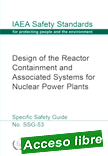 |
Design of the Reactor Containment and Associated Systems for Nuclear Power Plants
IAEA Safety Standards Series No. SSG-53 | STI/PUB/1856 | 89 pages | Date published: 2019
This Safety Guide provides recommendations on meeting the requirements of IAEA Safety Standards Series No. SSR-2/1 (Rev. 1) relevant to reactor containment and associated systems. The publication addresses the containment structure and the systems with the functions of isolation, control and management of mass and energy releases, control and limitation of radioactive releases, and control and management of combustible gases.
|
The Safety Guide is intended for use primarily for land based, stationary nuclear power plants with water cooled reactors designed for electricity generation or for other heat generating applications, such as for district heating or desalination.
|
 |
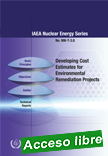 |
Developing Cost Estimates for Environmental Remediation Projects
IAEA Nuclear Energy Series No. NW-T-3.8 | STI/PUB/1857 | Date published: 2019
This publication addresses costs arising during individual phases of an environmental remediation project, how they can be calculated, and how they can be structured and documented. It provides the methodology of cost estimation and includes examples of cost estimate models, development plans, cost elements and work breakdown structures.
|
The guide also contains an overview of potentially suitable remediation technologies, which may help the reader to structure the options study.
|
 |
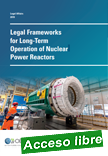 |
The Legal Frameworks for Long-Term Operation of Nuclear Power Reactors
OECD. Nuclear Energy Agency (NEA). NEA No. 7504. 2019. 175 pages
With almost 70% of the operating nuclear power reactors over 30 years of age, countries around the world are assessing whether to allow reactor operation past the 50 60 year mark and potentially up to 80 years. Ensuring a proper legal framework for the long term operation (LTO) of nuclear power reactors is a key component of such considerations.
|
The aim of this report is to provide insights into the various laws, regulations and policies that contribute to different countries' approaches to LTO. By collecting information from more than 20 NEA member and non member countries, this report highlights both commonalities among approaches as well as possible reasons for variations. Ultimately, the information gathered can serve as a vital resource for future exchanges respecting the legal aspects of LTO, with a view to further development and strengthening of the collective understanding of these issues.
|
 |
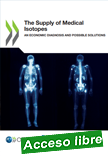 |
The Supply of Medical Radioisotopes: An Economic Diagnosis and Possible Solutions
OECD-NEA. Paris, 2019. 125 pages ISBN 978-92-64-62509-9
This report explores the main reasons behind the unreliable supply of Technetium 99m (Tc 99m) in health care systems and policy options to address the issue. Tc 99m is used in 85% of nuclear medicine diagnostic scans performed worldwide – around 30 million patient examinations every year.
|
These scans allow diagnoses of diseases in many parts of the human body, including the skeleton, heart and circulatory system, and the brain. Medical isotopes are subject to radioactive decay and have to be delivered just in time through a complex supply chain. However, ageing production facilities and a lack of investment have made the supply of Tc 99m unreliable. This report analyses the use and substitutability of Tc 99m in health care, health care provider payment mechanisms for scans, and the structure of the supply chain. It concludes that the main reasons for unreliable supply are that production is not economically viable and that the structure of the supply chain prevents producers from charging prices that reflect the full costs of production and supply.
|
 |
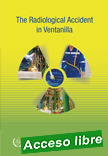 |
The Radiological Accident in Ventanilla
STI/PUB/1887 | 69 pages | Date published: 2019
This publication addresses the chronology of events and circumstances of the radiological accident in Ventanilla, Peru, in February 2014. The information includes a detailed description of the international assistance provided by the IAEA, the health consequences and dose assessment for, and the medical management of the affected individual. This information and the lessons learned from the accident, relating to its circumstances, the notification, medical response, dose assessment and response at national and international levels are key aspects for Member States to consider when analysing their response procedures to radiological emergencies.
|
The intention is to aid the and identification of necessary actions to be implemented in order to avoid or prevent potential similar accidents.
|
 |
| |
|
|

|
|
|
| |
|
|
| |
| |
|
|
| |
| |
|
|
| |
| |
|
|
|
| |
| |
